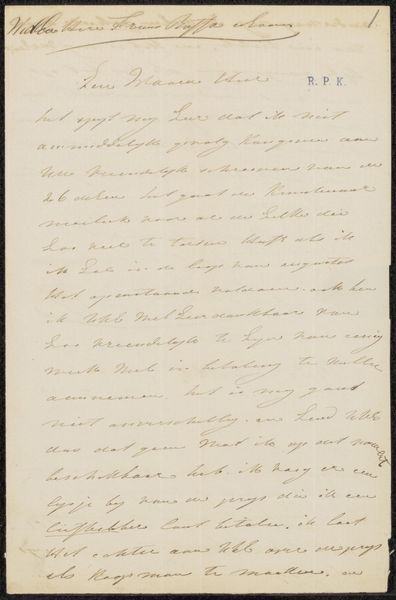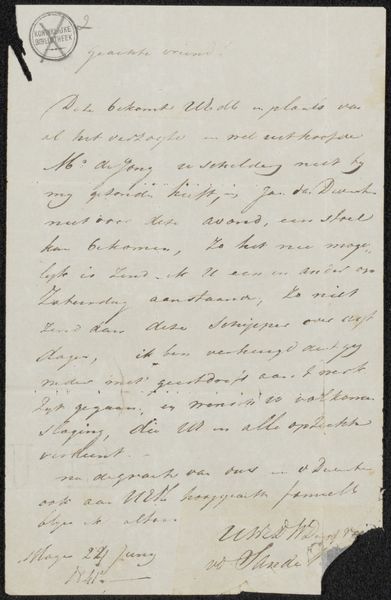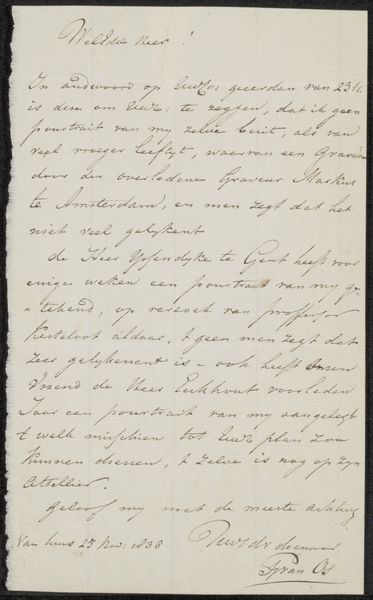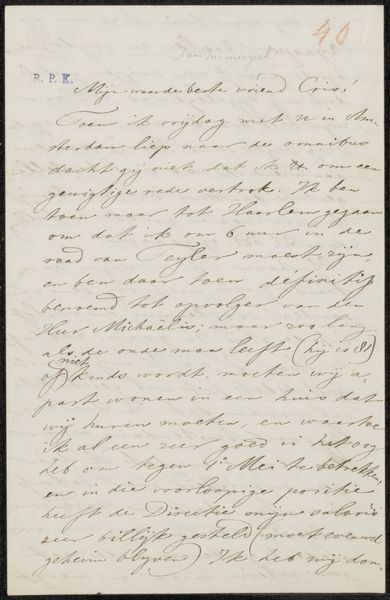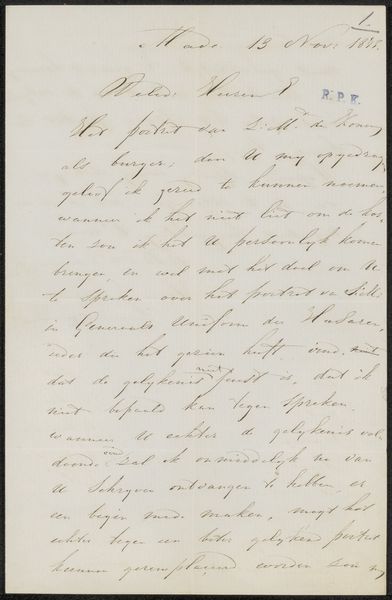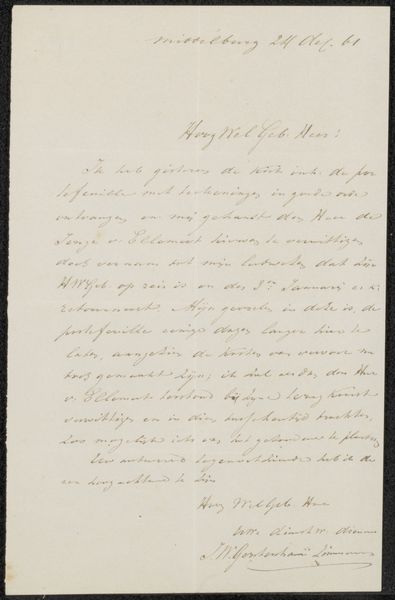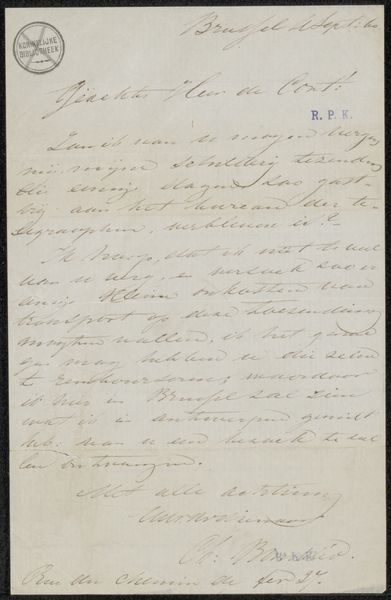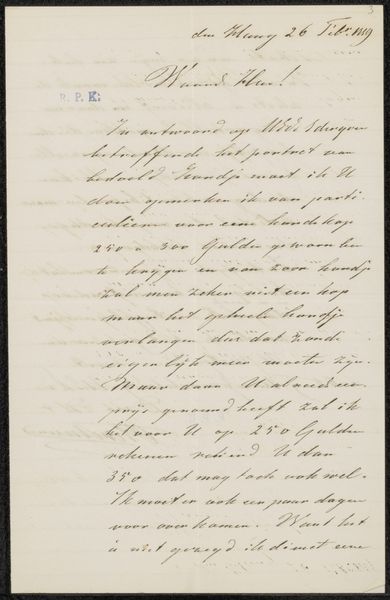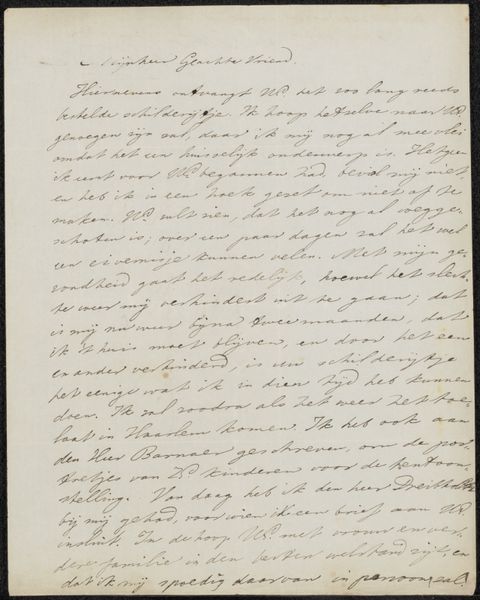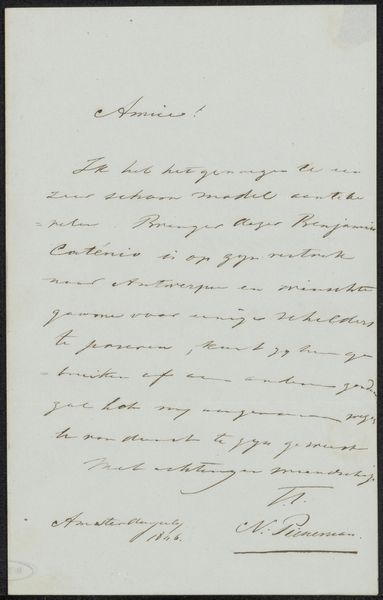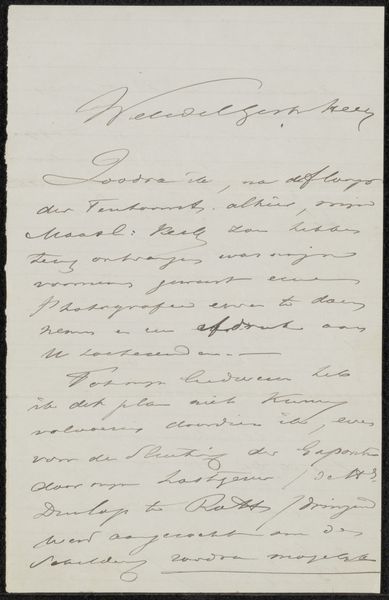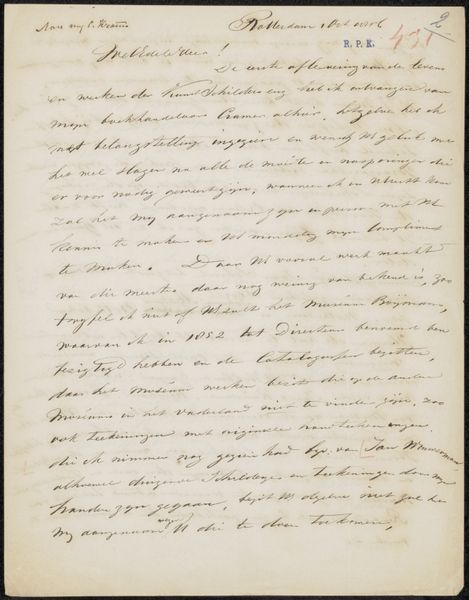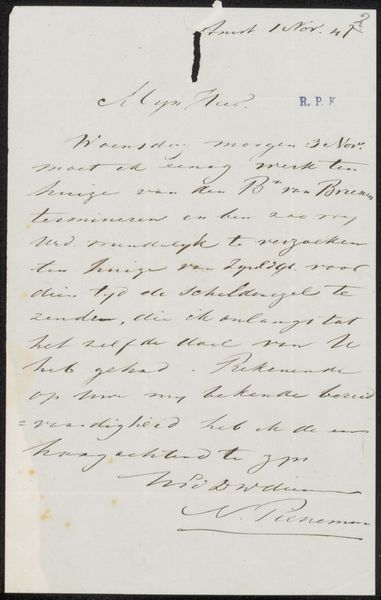
Copyright: Rijks Museum: Open Domain
Curator: This is “Brief aan Willem Roelofs (I)” by David Bles, likely from 1853, using ink on paper. The Romanticism style is striking here, isn’t it? It's a personal letter, really, so how does its medium and form speak to you? Editor: Well, the handwriting makes it feel very intimate and personal. You get a sense of the artist's own hand, and it makes me wonder about the relationship between Bles and Roelofs. Considering its at the Rijksmuseum, a Dutch National Museum, is this artist notable in Dutch Art History? Curator: Yes, exactly. Bles had a clear view to make a statement through these personal items being stored in museums. Romanticism was very engaged with a sentimental reading of things, but how can we consider that within socio-political tensions, such as, possibly, Dutch colonialism and its relationship to this 'sentimentality' that's found with relationships, the concept of 'nation' in this case? Editor: That’s a complex thought. The personal nature of the letter clashes a bit with its place in a large institution. Did preserving letters and other such intimate artifacts challenge or affirm how a Romantic nation conceived of themselves? Curator: It definitely walks that line, doesn’t it? These intimate expressions became documents and items to view publicly, shaping a certain national story. How might access to these kinds of documents, or the ways museums showcase such objects, play into larger power dynamics, do you think? Editor: Hmm, I never considered the display itself to be an argument in some way... Thinking about it this way gives new value to seemingly 'simple' things such as love letters! Curator: Indeed. It also tells us that it is possible to read even the smallest, most fragile art in dialogue with monumental historical processes. Editor: Fascinating. It is a very layered item once we consider what it presents in tandem with it's medium! Thank you!
Comments
No comments
Be the first to comment and join the conversation on the ultimate creative platform.
